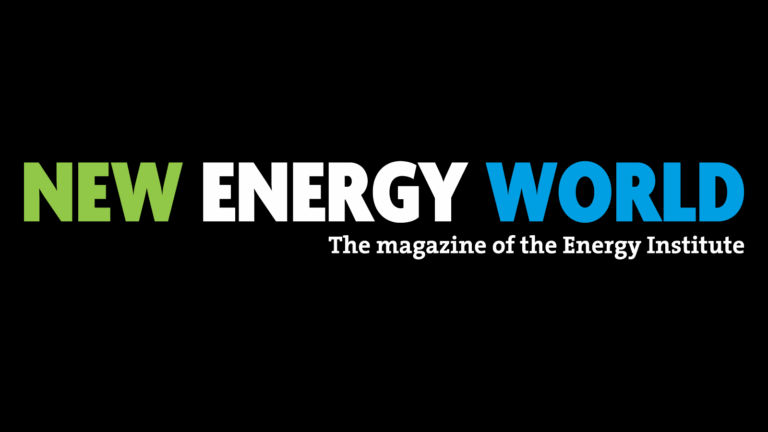Nick Petschek, EMEA Managing Director at change management company Kotter International
Photo: Photo: Kotter International
The UK-India Vision 2035 represents one of the most ambitious bilateral partnerships in the energy sector to date. Announced on 24 July 2025, this comprehensive framework targets $32bn in trade expansion across energy, green technology and clean infrastructure sectors.
As British green technology companies gain enhanced access to one of the world’s fastest-growing clean energy markets, the opportunity is enormous, but so are the risks. Without effective change management strategies to bridge cultural differences, organisations risk communication breakdowns, misaligned incentives and confusion over decision-making authority.
Energy companies that fail to master cultural alignment will watch their competitors capture market share, secure the best partnerships and dominate the clean energy transition, as technical excellence alone won’t win in this new landscape.
From silos to ecosystems
Traditionally energy companies operate within well-defined cultural and regulatory boundaries, but when this is challenged by expanding across borders, several common hurdles can come into play, including compliance gaps, approval bottlenecks and communication breakdowns. The bilateral partnership requires both firms to rewire their organisational DNA, breaking individual company cultural norms to reach competitive renewable energy targets.
To do this successfully, there must first be shared recognition that the current approach is insufficient in meeting ambitious clean energy targets. Leaders should demonstrate the competitive advantages of international partnerships through concrete data. In this case, for example, the thousands of jobs already created and nearly $7.5bn in new investments, serves as powerful evidence that cultural integration can deliver measurable results.
Building urgency, however, needs more than statistics. Leaders need to paint a vivid picture of the opportunities at stake and the risks of maintaining the status quo. When employees grasp that cross-border agility is the modern route to market access, resistance to change decreases significantly.
Energy companies that fail to master cultural alignment will watch their competitors capture market share, secure the best partnerships and dominate the clean energy transition, as technical excellence alone won’t win in this new landscape.
Building cross-cultural coalitions
Transformation succeeds when coalitions champion change across organisational levels. In the context of the UK-India deal, this means identifying ambassadors within both organisations who understand the business cultures and can translate not just language, but context, expectations and operational protocols.
These coalitions must include technical leaders who understand energy sector requirements alongside cultural interpreters who can navigate the differences in decision-making. UK businesses need advocates who can adapt to India’s consensus-driven validation processes, while Indian partners require champions who can integrate the structured nature of British risk assessment protocols without losing adaptive flexibility.
Companies like Airbus and Rolls-Royce, which have secured contracts worth $6.2bn under the new agreement, demonstrate how hybrid approaches leverage the UK’s renowned precision with India’s market adaptability.
In my experience of creating cultural change within energy, placing emphasis on vision alignment successfully created a statement that resonated across the organisation. In the UK-India context, this means co-creating a shared vision that embraces both cultures ways of work.
Removing barriers
Vision 35 will see tariffs averaging at 15% fall to 3% for British products entering Indian markets. Neil Spann, CEO of Power Roll and one of the business leaders who welcomed the agreement, emphasised the importance of fostering global thinking to make use of this milestone: ‘It lowers barriers to entry and enhances our ability to collaborate with Indian partners in one of the world’s most dynamic renewable energy markets.’
In a trade deal where collaboration is key, energy companies should identify and examine obstacles that reinforce cultural silos, from budget approval processes that favour single-country solutions to performance metrics that overlook collaboration.
The UK-India deal has already reduced trade barriers, providing a government-level model to follow for removing structural obstacles. Mirroring this internally could mean reshaping promotion criteria to include collaboration skills or modifying project approval processes to favour solutions that integrate solutions from Indian partners.
Training programmes that give employees tools to navigate new communication styles, decision-making processes, and relationship-building tactics can also help solidify success in these partnerships. For example, one organisation we worked with created a common ‘change language’ through training, establishing a shared terminology for decision-making authority, project timelines and escalation processes. These projects become laboratories for testing new ways of working, building capabilities in agility and cross-cultural collaboration.
To effectively make use of this new framework, companies that master cross-cultural transformation position themselves for success in an increasingly interconnected global energy marketplace. Cultural agility requires deliberate investment in training, redesigned governance, incentive realignment and building coalitions that span continents and mindsets.
The views and opinions expressed in this article are strictly those of the author only and are not necessarily given or endorsed by or on behalf of the Energy Institute.
Images are for reference only.Images and contents gathered automatic from google or 3rd party sources.All rights on the images and contents are with their legal original owners.

